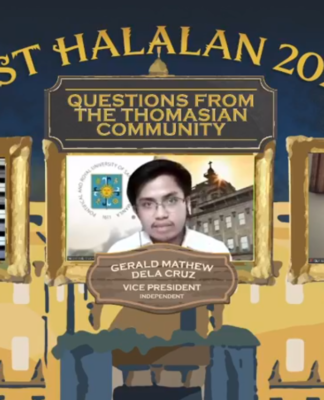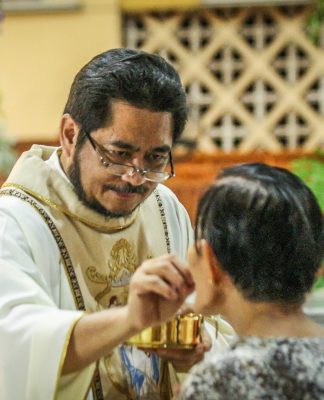WHAT do the Pope and the late Christopher Reeve and Ronald Reagan have in common? Aside from having become popular icons, they have bodies ravaged by diseases modern science seeks to prevent through stem cell research.
With high hopes of treating life-threatening diseases ranging from Parkinson’s to Alzheimer’s to diabetes, researchers are now hooked on harvesting stem cells or “primitive cells” that can be cultured and grown into any kind of tissue.
Stem cells are the early building blocks of the 210 total types of human cells. Since they are unspecialized and have the potential to become any kind of tissue, such as brain, tooth, heart, or skin tissue, scientists are experimenting on them to “custom-make” organs for medical purposes.
“Theoretically, you can even have a ‘custom-designed’ baby with the brain of Einstein and the beauty of Elizabeth Taylor, but everything is still experimental,” said Dr. Gloria Bernas, assistant to the Rector for research and development.
While there is a consensus in the promise of stem cells to fix broken bones, ugly skin, and degenerating neurons, the question is where to get them.
One source is the human embryo. But embryonic stem cell (ESC) cannot be obtained without destroying the embryos, hence raising ethical concerns. In the recent US presidential race where John Kerry and George W. Bush debated federal funding for ESC research, Bush won the “moral values votes” for opposing it.
According to Dr. Victoria Edna Monzon of the Department of Bioethics in UST Faculty of Medicine and Surgery (FMS), ethical concerns arise when people’s lives are used merely as means for other’s ends.
“There is growing consensus in the scientific community that human life begins at fertilization and it is unethical to sacrifice life to save another’s. No amount of good intention can right murdering life at its earliest stages,” Monzon said.
Because of the legal and ethical implications of ESC, scientists are exploring alternative sources for stem cells from adult body parts and from animals.
Adult stem cells (ASCs) have been found in the brain, bone marrow, blood vessels, skeletal muscles, skin, umbilical cord, liver, and what have you (see graph). Fats obtained from liposuction are also being put to use as unlimited sources of stem cells. Both ASCs and ESCs have advantages and disadvantages. ASCs present significant advantages over ESCs if taken from the patient himself since there is no worry of the body’s rejection and the need for toxic immunosuppressive drugs.
At present, the US government has already spent almost $191 million for ASC research, producing over 140 treatments for various diseases. Limited experiments on ESC, which began in 1998, are still in progress.
Meanwhile, stem cells from animals can be just as beneficial. Recently, scientists from the University of California experimented with a genetically modified mouse to grow large numbers of new blood capillaries in the skin. The technique enabled physicians to grow new blood vessels in heart patients and diabetics.
Researchers from the Forsyth Institute in Boston also took cells from pigs and cultured them inside the abdomen of rats, growing tooth crowns containing enamel and dentin.
Some stem cell researchers are considering cloning as another resource. The United Nations, however, is currently discussing whether to ban all forms of human cloning.
Philippine stem cell research
Although stem cell research has not yet taken hold in the Philippines, a Thomasian has successfully embarked on stem cell transplants using bone marrow stem cells.
“Our body has stem cells that can be used to regenerate tissues,” Dr. Francisco Lopez said. An alumnus of the FMS who has trained in the U.S. in stem cell research, Lopez does bone marrow stem cell transplants at the Asian Hospital in Alabang.
“Bone marrow stem cell transplant has already been used in other countries for the past 25 years, but it’s new in the country. ASC is still in its infantile stage here,” Lopez said. “It was introduced in 1990 by Dr. Honorata Baylon of the National Kidney Transplant Institute.”
According to Bernas, attempts to encourage doctors to do stem cell research in UST failed because of the high costs and impractical possibilities.
“More scientists are working on the application of stem cell research particularly in treating blood cancer,” Bernas said. “They’re also recommending it to degenerative diseases like Parkinson’s and Alzheimer’s and arthritis and other auto-immune diseases, but we still need to prove that,” he said. With reports from NHI, SPUC, and HLI-Asia.
















